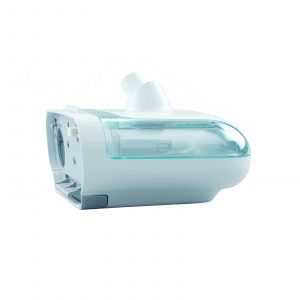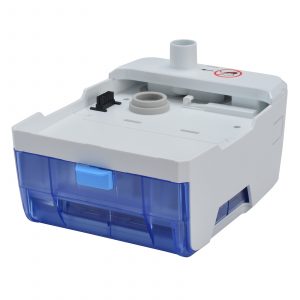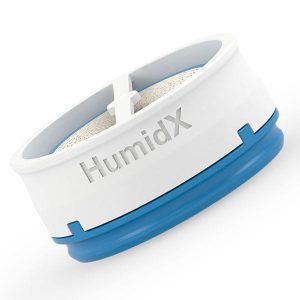Using a CPAP humidifier with your machine
A Sleep Apnoea humidifier, also known as a CPAP humidifier, instantly prevents common CPAP machine side effects. If you find yourself waking up with a dry mouth, nose or throat, adding a CPAP humidifier to your therapy will solve this.
It is clinically proven that humidification improves compliance and helps CPAP and BiPAP users avoid suffering from a dry nose, mouth and throat. A humidifier can be extremely beneficial for those who are often visiting countries with drier climates. Still, even in the UK and colder parts of Europe, CPAP users report significant benefits from a humidifier added to their setup.
Those who breathe through their mouths specifically benefit from using a CPAP humidifier. This is because when you breathe through your nose, the hairs in the nasal airway warm the air with heat and humidity before it enters the lungs. Whereas, when you breathe through your mouth, this process is not present and can lead to uncomfortable dryness. One other note is that allergies and illness can make the effects worse.
What does a CPAP humidifier do?
A CPAP humidifier houses a water chamber, which heats to add moisture to the air provided by your machine. They are ideal for those who find the device leaves them waking with a dry mouth, sore nasal passages or find the air cold and therefore uncomfortable.
Humidifier chambers are usually an additional piece of equipment that locks onto or into your main CPAP machine, but some machines come with a humidifier built-in. Most CPAP machines will have their specific CPAP humidifier available that is only compatible with the device.
For some people, having a humidifier moisten and warm the air from their CPAP machine is an essential part of their therapy; for others, there is little benefit, so it can come down to personal preference. Those using a full face mask are more likely to require humidified air as they are more susceptible to a dry mouth. For those using an oral mask, humidified air is more or less essential.
Intus healthcare advice:
All though we do believe that CPAP humidifiers can improve the comfort of the therapy for suffers, we would advise that if you’re new to CPAP therapy, you should try your mask and machine before you purchase a humidifier.
Choosing the best humidity level for your CPAP humidifier
The level of your CPAP humidifier determines the amount of moisture added to your therapy. Finding the best humidity level for your therapy can be down to trial and error.
We advise that you begin by setting your humidity level at a lower setting. If you find the humidity is too low and you’re uncomfortable, gradually increase the setting. If your humidity settings are too high you could experience gurgling sounds from your machine and rainout (condensation).
Refer to your device instruction guide for further advice on your CPAP humidifier.
CPAP humidifier rainout & how to solve it
A possible drawback of humidified air is from, what we call Rainout, the proper name for condensation build-up in the tubing and mask. It is likely to happen because the tubing and CPAP mask will be at room temperature (20–22 °C (68–72 °F)), causing the warmer air from the CPAP machine to cool and condense as a result.
Rainout can result in a gargling noise or just general discomfort; it is particularly common in the winter months.
One solution is to use a hose fleece, which provides the CPAP machine’s hose with insulation, temperature regulation and protection. The second and more comprehensive option is to use a heated CPAP hose, such as the universal Hybernate Heated Breathing Tube. A heated tube can only be used in unison with a humidifier. The heated hose ensures the temperature difference inside the tubing is negligible, preventing rainout and ensuring the air reaches you at the correct temperature.
You can contact us if you need any help with your CPAP humidifier.












